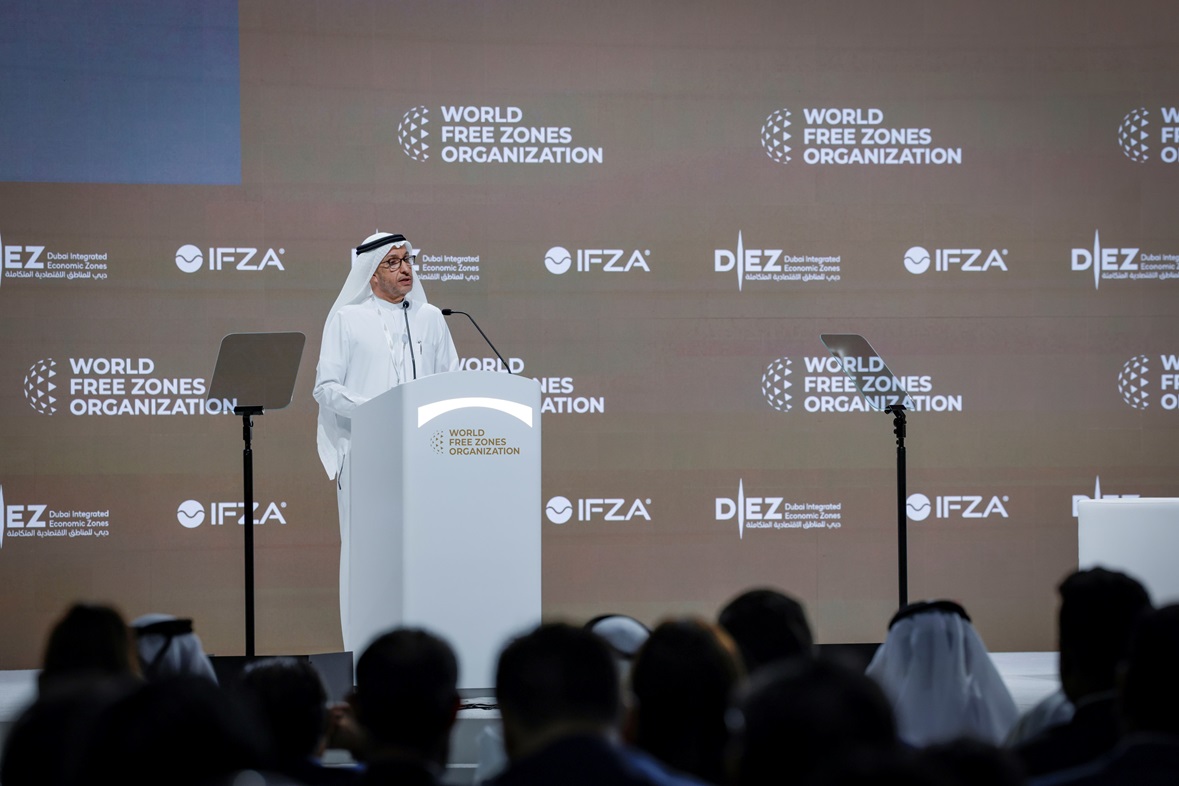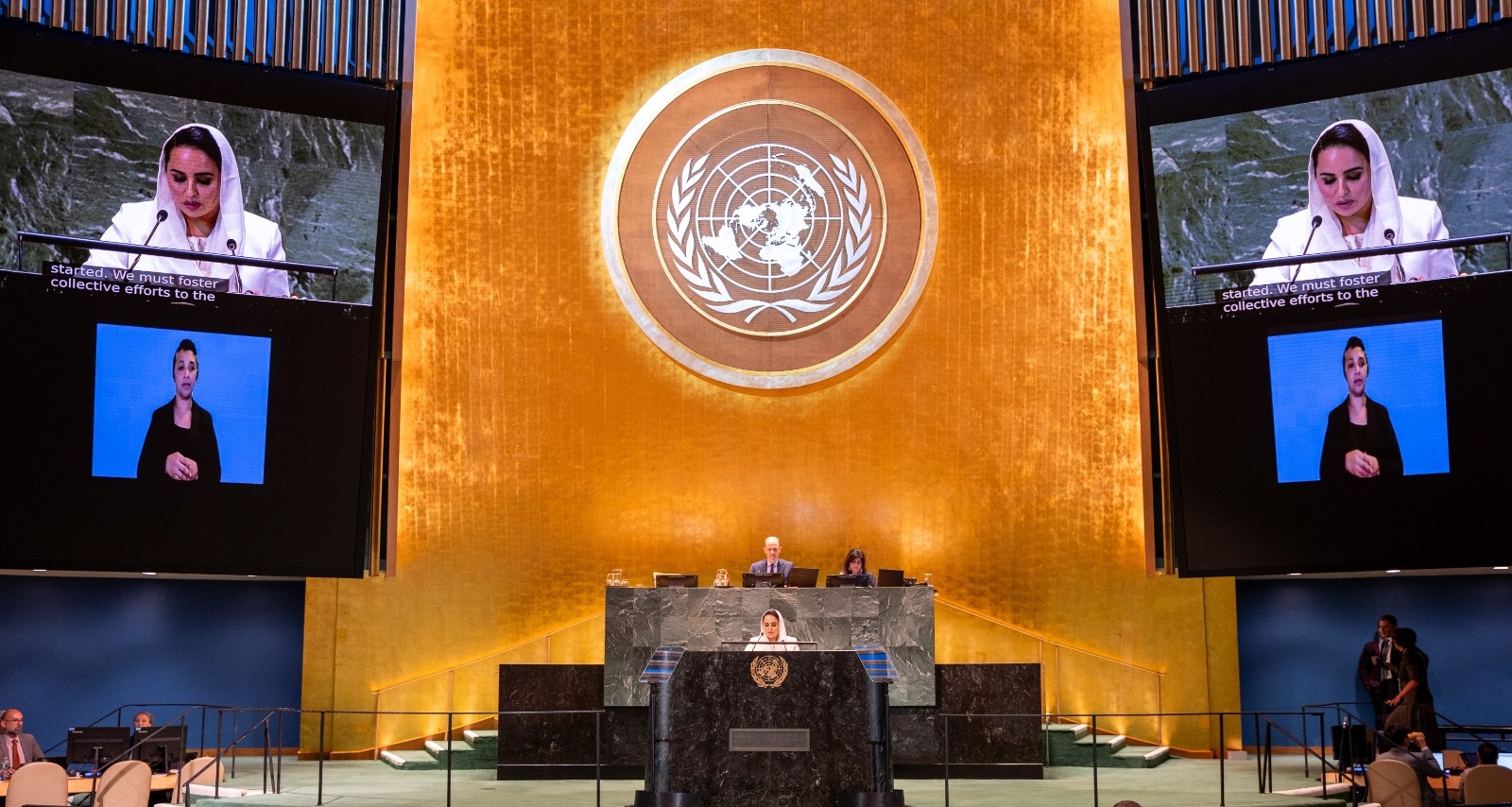LONDON, 21st March, 2023 (WAM) – Mohammed Jalal Al Rayssi, Director-General of Emirates News Agency (WAM) and Chairman of the Higher Organising Committee for the Global Media Congress (GMC), has reviewed the eight main themes of discussions and recommendations presented in the White Paper titled "Building Resilient Media Organisations in the Age of Disinformation" amidst a diverse array of global media outlets.
The Global Media Congress, in collaboration with WAM and the Henry Jackson Society, a leading trans-Atlantic think tank, launched the White Paper at an exclusive event held in Westminster, London on Monday. Over 60 media leaders, MPs, academics, and other prominent figures from across the industry participated in the launch event.
The recommendations presented in the White Paper were deliberated by media professionals, international correspondents, and academic researchers during the first edition of the Global Media Congress, which was organised by the Abu Dhabi National Exhibition Centre (ADNEC) in strategic partnership with WAM in November 2022. The Chairman of the Higher Organising Committee for GMC emphasised the importance of the White Paper's findings as a global priority for news and media entities worldwide to establish adaptable media institutions in the age of media disinformation. These institutions aim to foster sustainable cooperation in sharing information, dispelling rumors, and producing reliable written, audio, visual, and digital content in various languages to serve humanity.
The White Paper is a significant international reference and research summary produced by a team of experts, specialists, editor-in-chiefs, and correspondents from different countries worldwide. It draws on studies and research conducted across various disciplines of media and provides an in-depth analysis of two topics that continuously concern media professionals. The first topic is internal, addressing the sustainability of the organisations they are part of. The second topic is external and examines mis- and dis-information, which is becoming a defining trend of our era, with the difference between the two coming down to intent.
The executive summary of this paper included eight main axes as follows:
First: On reforming legacy media sustainably
Legacy media organisations face significant challenges from the rise of online-only media, competition from social media platforms, mis- and dis-information, and a disconnected audience. Sustainable reform, according to global media experts, requires increased investment in digital offers, developing unique content, and adopting a creative approach to analysis and reporting. A key insight stressed by media executives is the importance of not getting carried away with innovation, but keeping focused on the quality of content and the organisation’s long-term objectives.
Second: The evolving balance between entertainment, profitability, and information
Media organisations are pulled between the necessity to please their investors on the one hand, and audiences on the other. It is important for media organisations to not only provide engaging and entertaining content, but to find ways to monetise that content and generate revenue all while providing accurate and reliable information to their consumers. This can be a difficult balance to strike, and different media organisations approach it in different ways. Some prioritise entertainment and profitability, while others focus more on providing information and news. 2. The balance between entertainment, profitability, and information for media organisations is constantly evolving as technology and consumer preferences change.
Third: Tackling public media illiteracy in the age of disinformation
In what is widely being described as the age of disinformation, individuals and media organisations face unprecedented challenges in navigating a polluted information environment. Interaction with false information has become an inevitable part of daily life. In such a polluted information environment, journalists are increasingly maligned as disruptors rather than gatekeepers of the truth, with a long-term impact on public trust. For this reason, media industry practitioners insist on the long-term benefits of offering media literacy training at schools, universities, and in all professional environments – either on a regular or ad hoc basis. Learning the importance of understanding biases, thinking critically, and fact checking from a young age could transform the way information is used and distributed.
Fourth: Gen Z (dis)loyalty: An opportunity to re-imagine media coverage and reporting
Media industry practitioners are concerned by traditional media organisations’ engagement with younger generations. Media consumption habits differ between age groups, with Gen Z primarily interested in visual, short content. There is a desire in the industry to bridge this gap through the use of technology, fresh storytelling methods, and more on-the ground reporting.
Fifth: Into the metaverse: A revolution for the media industry?
The opportunities presented by this metaverse for news organisations appear extensive – whether it be boosting engagement, access, advertising revenue, or social impact. The challenge of delivering credible reporting in the face of rampant disinformation remains, for many media practitioners, a more critical issue than the medium by which information is transmitted.
Emerging technologies, including artificial intelligence, and in particular generative AI of the likes of ChatGPT that has taken the internet by storm in recent months, will define this 4D internet. And these technologies could be game changing for the future resilience of the media industry, providing journalists with immersive and engaging ways of both gathering verified stories, countering fake news, and reporting accurately to their audience. Undoubtedly, journalism has always adapted and evolved in line with the latest technological innovations.
Sixth: Taking the Fight to the ‘Great Attrition’
Post-pandemic, the media industry like others worldwide is experiencing what many are describing as a ‘great attrition’, and a sense of record-breaking struggles with employee retention. Yet many of the challenges news organisations face with retaining, upskilling, and motivating journalists pre-date COVID-19. Investment in training staff and equipping the media sector with the tools to handle massive information (and disinformation) flows is more important than ever for building resilient organisations. Disruptive and intelligent technologies have a role to play in enabling journalists to refocus on the core principles and rewarding elements of their role.
Seventh: Advocating for agile media rules and guidelines
Providing direction to the media is a challenging task and it begs a consistent, yet dynamic and flexible approach. In that regard, social media platforms might be the pioneers the industry needs, however even the tech giants are struggling with the task at hand, attesting to the complexity of the issue. Even if there is no silver bullet, there are some innovative options, a combination of which can help strike the balance – between the traditional role of the media in our societies with the need to ensure that the information being disseminated is accurate and not harmful.
The European Union recently rolled out its Digital Markets Act and Digital Services Act, which provides for increased liability for social media tech giants with regards to “illegal content”. Even before such initiatives, the increase in misinformation on social media had spurred demands for vast increases in content moderation on the leading digital platforms.
Eighth: The case for local news by local people
Local reporting by local people can provide a better perspective on the events, issues, and stories that are relevant to their context, and can help to foster a sense of belonging and connection among residents. Local news also plays a critical role in holding local officials and organisations accountable, providing a platform for community members to voice their concerns and opinions. This promotes transparency and credibility, and embeds long-term resilience among news organisations.

 World3 years ago
World3 years ago
 World3 years ago
World3 years ago
 Business12 months ago
Business12 months ago
 Entertainment7 years ago
Entertainment7 years ago
 World7 years ago
World7 years ago
 Entertainment7 years ago
Entertainment7 years ago





